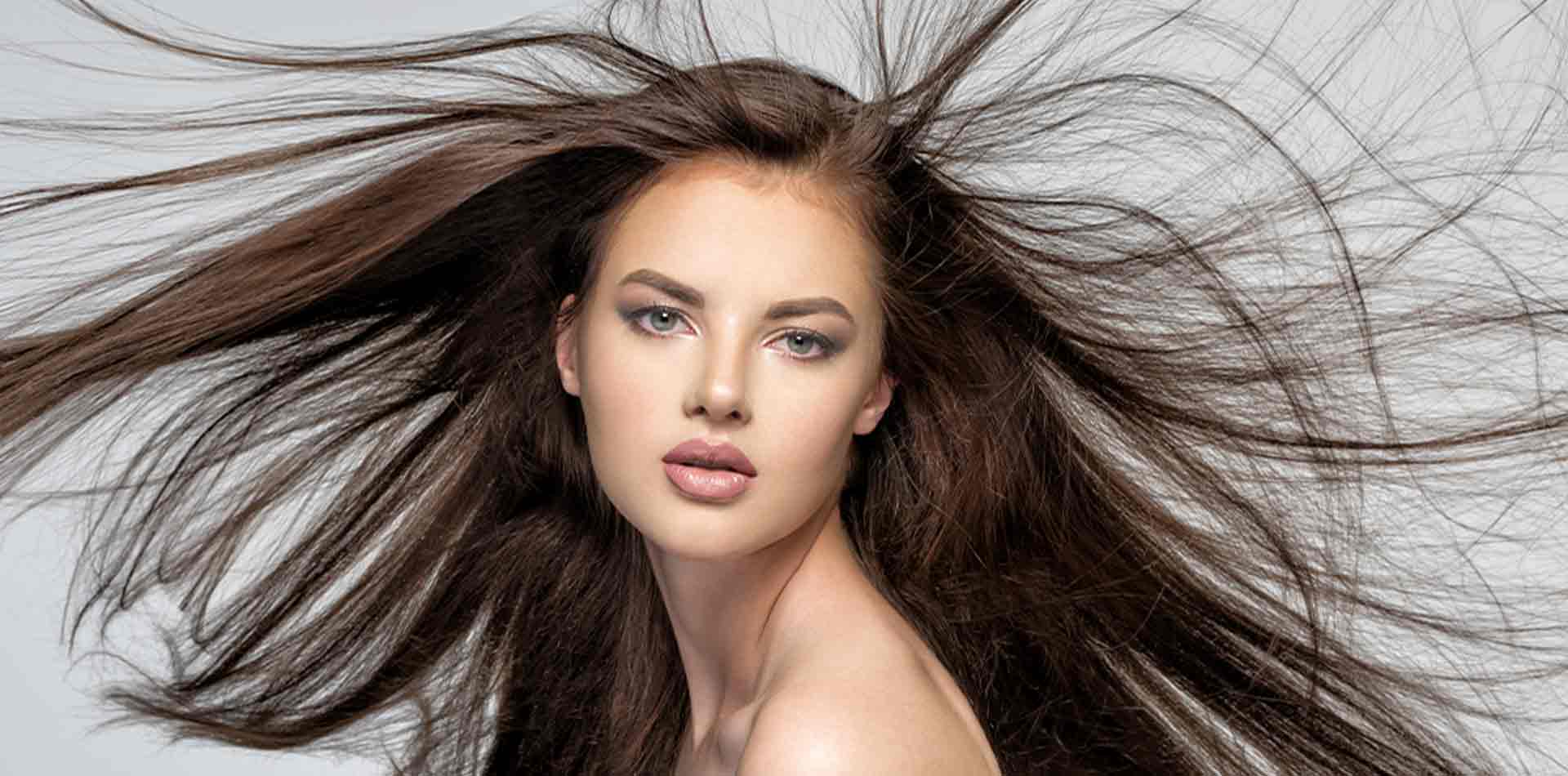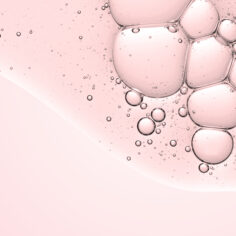To understand the science behind hair growth, we need to know about our hair first. The structure and composition of hair make it more complex than it appears from the surface. About 65% – 95% of hair is composed of fibrous protein. Apart from it, the hair consists of lipids and water in small quantities.
Hair is made up of keratin, a tough protein, and it is the hair follicle that anchors each hair into the skin. Further, the hair bulb forms the base of the hair follicle. Now, inside the hair bulb, live hair cells start dividing and grow to build the hair shaft. Also, blood vessels keep nourishing the cells in the hair bulb alongside delivering hormones that modify hair growth.
In recent times, Biotin (Vitamin B7) has been in vogue to promote hair growth as it can increase the hair follicle growth rate and stimulate keratin production in hair. Thus, consuming Biotin supplements or foods containing Biotin might make your hair stronger and protect it against falling out.
But, for a comprehensive understanding of hair growth, we might need to consider a few more pointers here. Some of these include understanding the hair growth cycle and the different factors affecting it. Finally, the role of Biotin in accelerating and helping hair growth needs to be understood.
Let’s take a look!
-
Hair growth cycle
The growth and falling of hair might seem like a simple process for most of us, but it consists of 4 distinct cycles underneath it. The four phases are:
Growing phase or anagen: The bulk of your hair growth primarily happens during the anagen phase. Typically, the hair shaft grows by roughly about half an inch per month. Hence, you can consider that it takes close to 3-5 years for hair follicles to reach the entire growth potential. The anagen phase can last up to 6-7 years for individuals whose hair is capable of growing up to 1 metre long.
Transition phase or catagen: As the hair reaches the end of the growth phase, it enters into a transitional phase, also termed catagen. This phase can last for up to 10 days.
Resting phase or telogen: Next comes the telophase, which is a resting phase in which your hair is released and falls out. The follicle remains inactive for 3 months. Post that, the cycle is repeated. One thing to be noted is that each hair follicle is independent and will go through these phases in its due time.
Shedding phase or exogen: For the longest time possible, extended hair shedding was assumed to be a part of telogen. However, it is now clearly established that extensive shedding is part of a distinct phase, exogen.
As per research and multiple reports, shedding the hair fibres is a highly controlled and active process. Consequently, the process might differ from what happens during the telogen phase.
To be more precise, the term “exogen” is used to describe this event as a specific process of its own during hair follicle cycling. Previous studies in this regard assumed that the newly formed hair fibres push the resting shaft outward to affect hair shedding. But now, it is established that the first three phases mark the growth and maturation of hair, whereas, in the final stage, the old hair sheds and is replaced by new hair.
Now that you understand how Hair grew up and moved through all the stages of life, let’s understand what reasons influenced their growth.
- Factors affecting the rate of hair growth
There are multiple factors responsible for your hair growth, here are a few of those –
- Vitamins & Minerals
The B vitamins, Vitamin C, Vitamin D and Vitamin E are beneficial for hair growth. The B vitamins include Vitamin B7 (Biotin), Vitamin B12 and others. This is why most dermatologists prescribe Biotin for hair growth. But researchers are somewhat conflicted about the role of Biotin in hair growth. They believe that these supplements might only provide noticeable results for those who have a Biotin deficiency. However, several Biotin consumers have reported that they have seen noticeable results as well. Nevertheless, the research behind it is still ongoing. Besides this, the minerals responsible for hair growth include iron, zinc, iodine, protein and silica.
- Stress
Young adults primarily deal with hair fall, and the reason might be long working hours and stressful life. However, there are three types of hair loss related to stress.
- Trichotillomania (One is unable to resist the urge to pull out their hair): This is an uncontrollable urge of individuals to pull hair from the scalp or other areas of your body. Hair pulling is a way to cope with increasing stress, uncomfortable or negative feelings like frustration, boredom, tension or loneliness.
- Telogen Effluvium (Temporary hair loss): In this case, increasing stress pushes a significant number of hairs into their resting phase (telogen). As a result, after a few months, a large number of hairs might fall suddenly while washing or combing.
- Alopecia Areata (Autoimmune disorder resulting in patchy hair loss): Although a lot of factors cause alopecia, one of them possibly includes stress. In this case, the body’s immune system attacks the hair follicles and promotes hair fall.
- Hormone
Another cause of hair fall is hormones, and a few of them affect hair growth significantly. Among the hormones, oestrogen, testosterone and thyroid are notable. For example, the female hormone oestrogen increases the count of the hair follicle in the growth cycle during pregnancy, and after childbirth, the hormone level drops and triggers hair fall. But, in the case of males, testosterone, when combined with 5 alpha-reductase (5AR), forms Dihydrotestosterone (DHT). This DHT is one of the primary reasons behind male hair loss. Now, under normal conditions, women have a minute level of testosterone. However, even a lower level of testosterone can lead to DHT-related hair loss in women. Apart from it, hyperthyroidism and hypothyroidism promote hair loss as well.
- Genes
When it comes to hair, we only consider genes as a responsible factor for hair colour, growth, texture, and density. But, apart from those, genetic factors can lead to hair loss. For example, Dihydrotestosterone or DHT triggers miniaturisation of hair follicles. This leads to thinning of hair and decreases its overall volume. But, with time, these follicles can cease to produce hair.
- Exercise
Exercising regularly can increase the rate of your hair growth. Exercising regularly also promotes overall well-being, increases blood flow within the scalp and distributes nutrients properly.
A few of the exercise for hair growth includes –
- Jogging
- High-Intensity interval training (This is a type of training regime that includes several rounds of high intensity workouts followed by variable recovery times.)
- Scalp massage
- Alternate nostril breathing
- Strength training
- Standing fold pose
- Camel pose
- Wild relieving pose
- Hair growth rate
Hair growth rate depends on a variety of factors. There are around 5 million hair follicles in our body and about 100,000 on our scalp. But, as we age, most of them stop producing hair which leads to hair thinning and baldness. According to the American Academy of Dermatology, the hair grows about 1 to 2 inches per month, and our scalp hair has an average growth of 6 inches per year. The factors affecting our hair growth include –
- Health
- Hair type
- Age
- Genetics
In recent times, the sales of health supplements increased considerably on a global scale. While there will always be conflicting views on this, many people claim to have seen a positive impact of Biotin supplements on hair growth and hair fall control.
Biotin and Hair Growth
So, what is Biotin? Biotin or Vitamin B7 is a type of vitamin that is found in bananas, milk and eggs. It is a part of the body’s enzyme that breaks carbohydrates, fats and other substances. Although a few tests can detect biotin deficiency, it is usually detected from symptoms like hair fall, hair thinning, red scaly rash around the nose, eyes and mouth.
But experts have mixed reviews on the efficiency of Biotin to counter hair problems. Few strongly support the fact that supplements like Biotin tablets countermeasure the hair fall problem and help improve hair growth. Besides this, patients can also consume biotin-rich food such as vegetables, nuts, seeds, and legumes for healthy hair.
However, if you are consuming Biotin for hair, you must have an adequate amount of intake. For this regard, consider the table below as a minimum requirement.
| Category | Biotin Intake |
| 14 – 18 years | 25 mcg/day |
| 19 years and above | 30 mcg/day |
| Pregnant women | 30 mcg/day |
| Breastfeeding women | 35 mcg/day |
Since Biotin is a water-soluble vitamin, even if you consume higher amounts of Biotin it is flushed out of the body.
Therefore, it is not a surprise anymore that hair growth is a highly complicated process, albeit astonishing given the number of significant findings over the years. Millions of people suffer from hair growth problems, and the secret lies in the science behind every stage in hair growth. In recent years, hair growth has been one of the most talked-about areas of interest in the natural hair community. Unfortunately, there are still several misconceptions, misinformation and assumptions surrounding this that can only be tackled by accepting and thinking in lines of hair science.
Disclaimer:
If you have any health issues or are pregnant or breastfeeding, you must consider consulting a doctor before the intake of supplements.
Last modified: August 2, 2023






